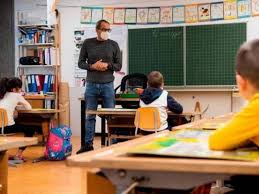Covid-19: Italy’s high school students demand return to classroom

Rome: Students and teachers of Italian high schools protested in Rome and elsewhere in Italy on 11 January to demand a safe return to the classroom and an end to distance learning.
Only three of Italy’s 20 regions – Abruzzo, Tuscany and Valle d’Aosta – will see their high school students return to class, where 50 per cent of lessons will resume in the classroom.
Remote learning remains in place 100 per cent in all other regions whose leaders have chosen to postpone the reopening of their high schools to dates varying from 18 January to 1 February.
Students across Italy are holding demonstrations, open-air lessons and strikes in protest over the continuation of the distance learning policy introduced by the government in October in response to a second wave of covid-19.

“I understand their frustration” – Italy’s education minister Lucia Azzolina told RAI Radio 1 this morning – “it’s difficult for students to understand why they are not going back to school.”
Claiming that distance learning “no longer works” and citing a “blackout in social interaction,” the minister said that the students are “angry, disoriented and I am worried about the explosion of school dropout levels.”
Azzolina – who had pushed for Italy’s scuole superiori to reopen on 7 January but settled on the compromise date of 11 January – said the risk of covid-19 contagion is “very low” in Italy’s schools which are “organised very well.”
The school protests are taking place as Italy returns to its three-tiered, colour-coded system of red, orange and yellow coronavirus restrictions, with different rules applying to each region.
The majority of the country now comes under the yellow zone category, with five regions – Calabria, Emilia Romagna, Lombardia, Sicily and Veneto – classified as orange zones. There are currently no regions in the highest-risk red zone.
Italy’s Prime Minister Giuseppe Conte is set to introduce a new emergency decree on 15 January, either modifying or extending the existing coronavirus restrictions.





